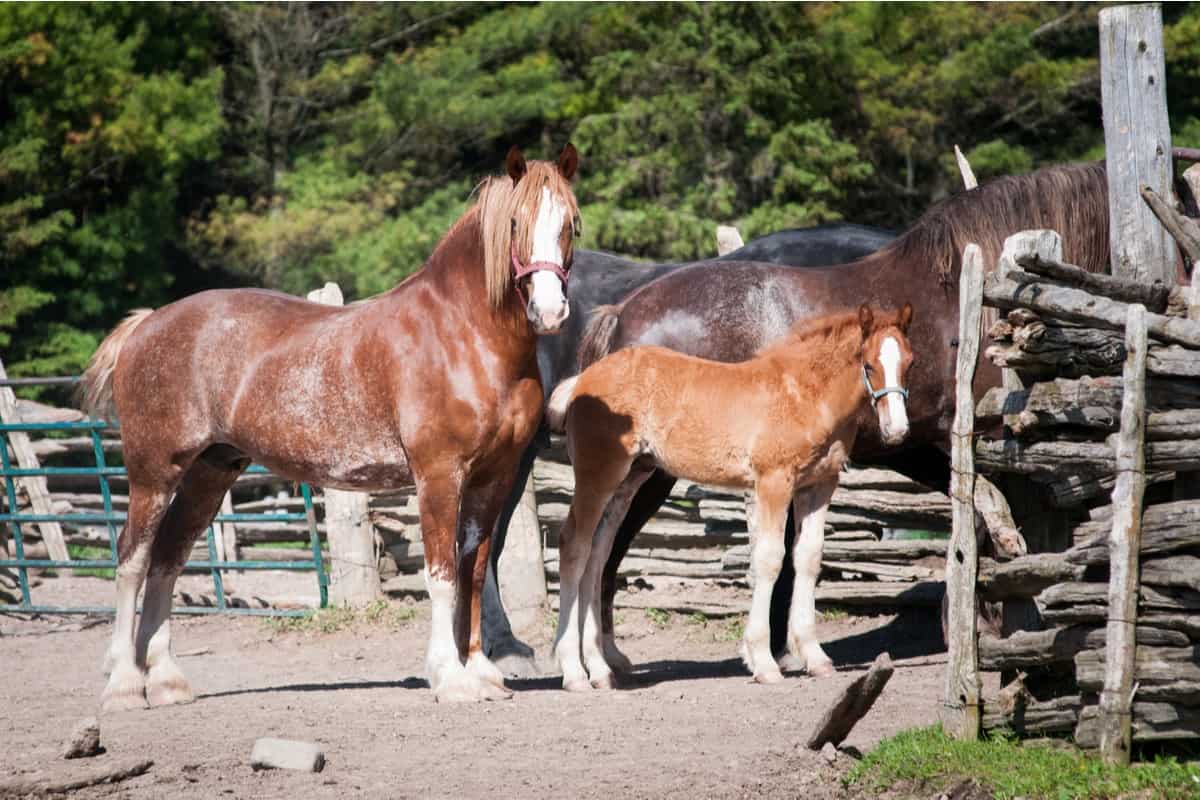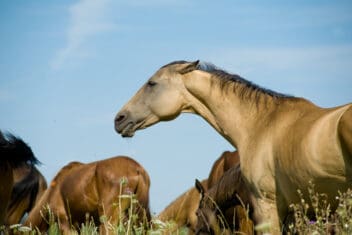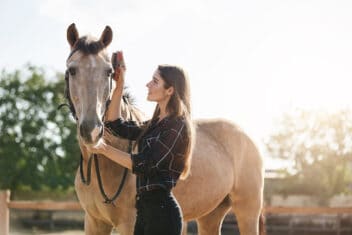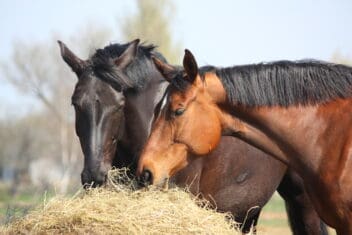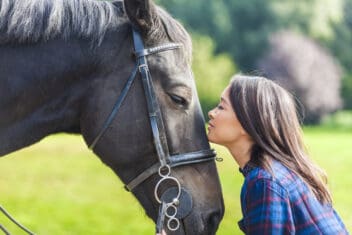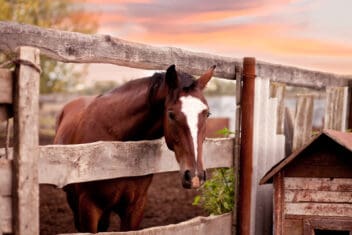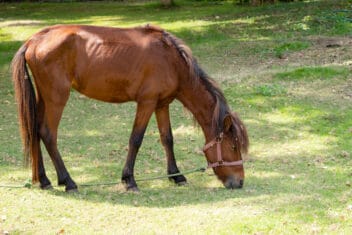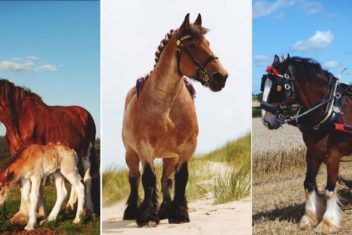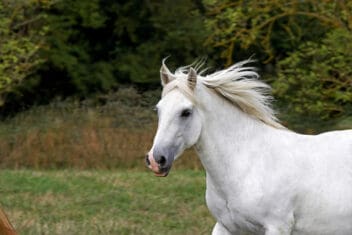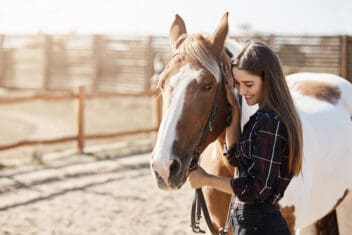Is there anything more iconic than the image of a Percheron hauling a plow across a section of pasture?
I don’t think so!
That’s why so many farmers are returning to the idea of using draft horses in agriculture.
Of course, draft horses aren’t for everyone – and there are certain considerations you’ll need to make before you decide to add them to your team. However, for many people, they can be the environmentally-friendly solution to the biggest challenges they face on the homestead.
Here’s what you need to know about raising draft horses on your farm.
Benefits of Raising Draft Horses On Your Homestead
There are so many benefits of using draft horses versus conventional machinery on your farm.
For one, they are incredibly efficient when you are using them close to home. If your farm is small (less than 200-acres), horses are a better choice than machinery because they can get into areas where things like tractors or skidders might be more limited. This makes them perfect for working in densely forested areas.
Although you will have to pay to feed and house them, they offer various economic benefits in that you can grow their food. When was the last time you were able to grow diesel fuel to power your tractor? I’m guessing the answer is never.
This can lower your expenses and improve your independence and self-sufficiency.
Don’t forget that draft horses produce lots of manure – up to 15-tons of it per animal, per year. Horse manure is incredibly valuable for soil fertility and can help you return nutrients to the soil.
Finally, when using horses, as compared to machinery, you’ll likely find that they do a better job. They compact the soil less, cultivate it more cleanly, and cause less damage. They can be used for logging, plowing, and countless other applications.
While the benefits of raising draft horses on the farm can’t be ignored, there are of course considerations that need to be made before you bring a pair home. Let’s discuss that topic in more detail.
Find the Right Breed
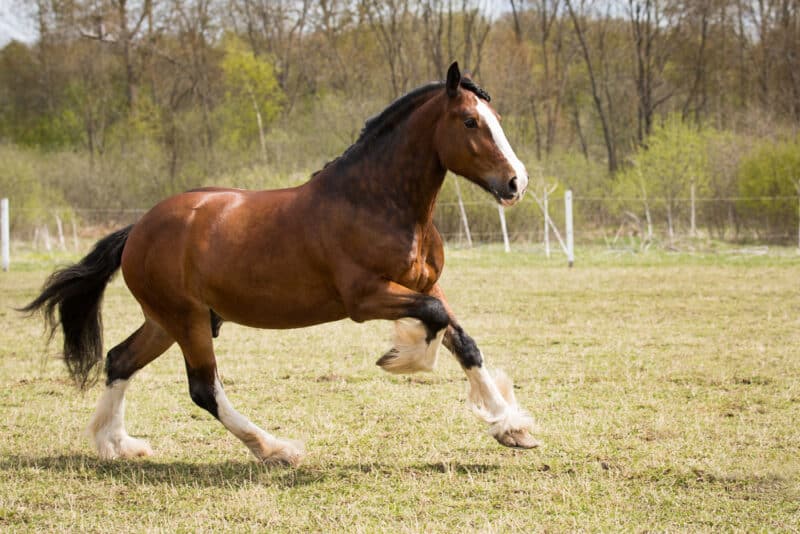
There are several breeds of draft horses you can raise on your farm but not all are equally suited to every task. Here are some of the most common breeds, but know that you can find a more comprehensive resource here.
Shires are known for their strength and size, weighing up to 2400 pounds. They are the largest of all horse breeds and can pull extremely heavy loads. Shires are often used for plowing, driving, and even riding. They are also great at pulling.
Clydesdales tend to be the most recognizable draft horses – if you see a Clydesdale you know it! These animals are generally used for farm work and hauling longer distances. Of course, you could always go the route of the Budweiser corporation and use them to haul kegs of beer – but you probably will find you don’t get much done on the farm if that’s the case!
The Percheron is one of the oldest breeds and is known for its elegant, yet powerful and graceful, way of moving. These animals were first used as war horses since they are quick and strong. However, their intelligence and grace make them good choices for farm chores and, above all, forestry work, like hauling firewood.
Other good options include:
- Suffolk Punch
- Belgian
- Haflinger
- Irish Draft
- Ardennes
Feeding Draft Horses
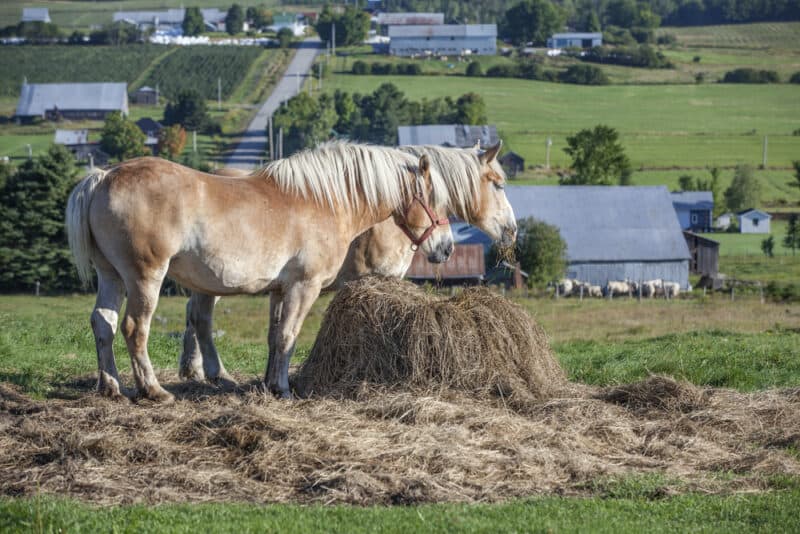
The phrase “eat like a horse” doesn’t exist for nothing! If you’re going to raise draft horses properly, you need to know how to feed them. These animals know how to eat – and they can eat a lot.
Mature horses should be fed at least 1.5% of their total body weight in forage daily. You can feed high-quality grass hay or grass and legume mix. Pasture grasses, when available during the growing season, are also good options. Aim to feed around 1-2 pounds of hay for every 100 pounds of body weight, along with up to 1-2 pounds of fortified grain for every 10 pounds of body weight each day.
You may find that you need to feed larger rations when the animals are working since they’ll have a higher energy expenditure at this time.
The good news is that draft horses have a slow metabolism, so as long as they aren’t moving, they aren’t going to burn nearly as many calories as you might expect. In the winter or when your animals aren’t as active, the nutritional requirements drop way down.
In addition to hay and small amounts of grain, you will also need to provide your animals with a salt and mineral supplement. Most draft horses would rather eat loose salt instead of block salt, so keep this out of free choice. Keep all of your managers clean and free of dust and feed horses both in the morning and evening.
If you must make any changes to your horses’ feeding schedule or diet, do so gradually to prevent shocking them. Don’t forget about fresh water, either! A single horse needs up to 10-gallons of water each day.
Housing for Draft Horses
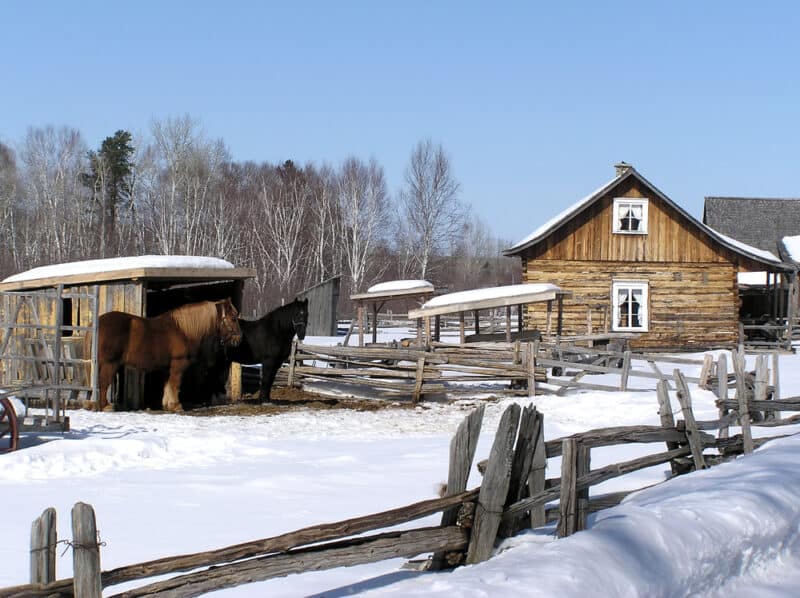
Because they are so much larger than regular horses, draft horses need larger stalls in the barn or stable. It should be at least 24 x 24-feet with excellent ventilation.
As long as the climatic conditions allow for it, you can also keep your draft horse outside in a fenced-in pasture or dry lot. The pasture should be at least 1-2-acres (for a single horse). If you choose, you can put a small 3-sided shelter out there to provide some protection from the rain.
Keeping your draft horse outside for much of the day is advised, as it will help prevent a variety of health issues. It can ensure good digestive health and prevent your horse from becoming lethargic and depressed.
Training Draft Horses
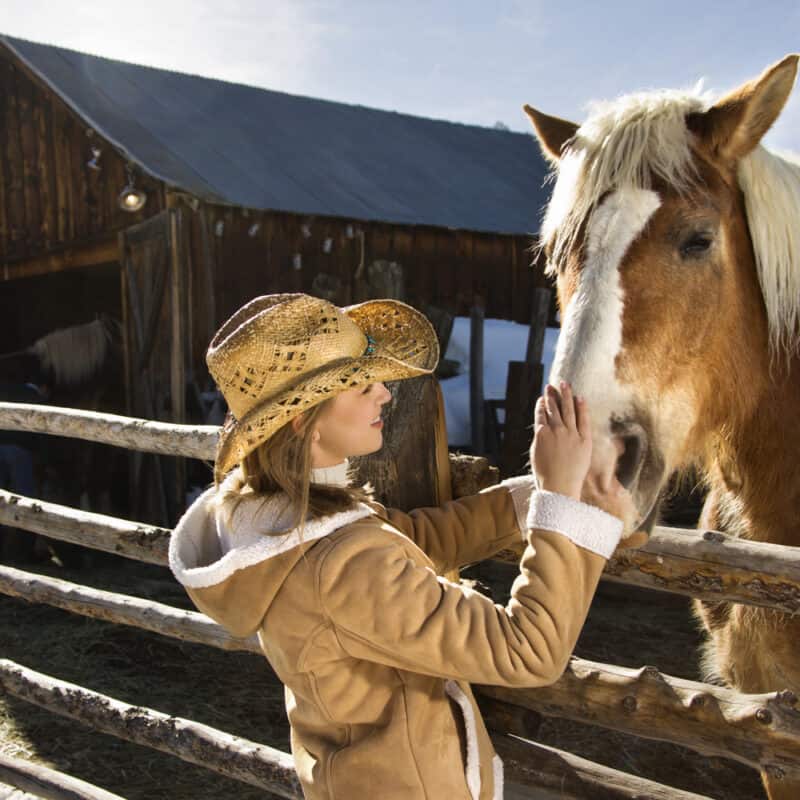
Draft horses thrive with activity, so even before you start the process of formally training your horse, it’s a good idea for it to get some exercise daily. There are a few ways you can do this.
One is to simply take walks with your horse every day. You can also encourage your horse to pull a tire or small sleigh. Use treats to entice him to do so.
Handling your draft horse early and often is key. If you are raising these animals from the day they are born, start working with them immediately so they imprint on you. Rubbing and petting young horses often is a good way to teach them to respond positively to your touch.
Once your horse is a little older, you can move on to teaching tasks such as:
- Picking up the feet to ensure a sound foundation
- Accepting a harness
- Listening to voice commands
- Moving away from pressure
- Lowering the head for bridling
Before you even think of hitching your draft horse up to a cart, make sure you’ve engaged in introductory exercises like long lining and ground driving. Once your horse has solid manners and is physically mature, then and only then can you hook it up to a wagon.
Remember, a well-trained horse is a safer horse to work with. Don’t try to add weight until you’ve taught your horses how to behave.
Be Patient!
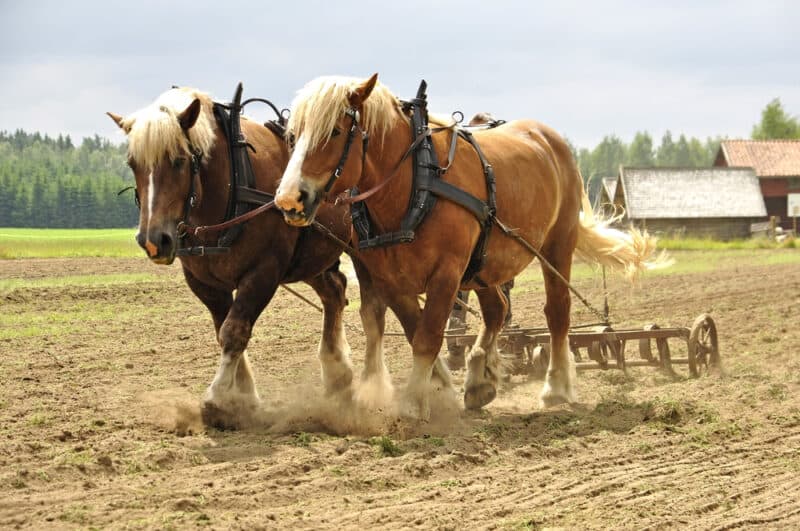
Raising draft horses does take some skill, especially once you start to get into the nitty-gritty of how to train these majestic creatures. Buying a horse is simple, but it’s the rest that you need to pay attention to. After all, tractors aren’t going to die from being mishandled – but horses can.
Read as many books and articles as you can about raising draft horses, but know that the best way to gain experience with these animals is to do it for yourself. If you can apprentice with an experienced teamster or enroll in an instructional school (or intern on a horse-powered farm), you’ll gain invaluable experience that will last a lifetime.
Compared side by side, draft horses may not be able to work as much land as tractors or other types of machinery. However, they allow you to work with less expense, so they make up for that. After all, draft horses offer significant cash savings when it comes to fertilizer bills, fuel bills, and other expenses.
While you’ll have housing and vet bills to contend with, you can say goodbye to expensive fuel bills and maintenance costs. After all, when was the last time you had to repair the clutch on your Percheron?
